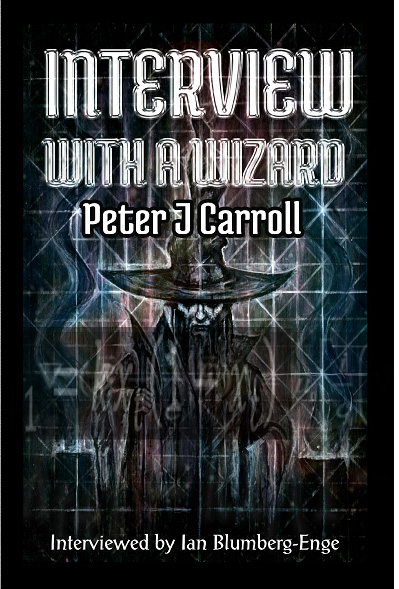
Tag Archives: Peter J. Carroll
Epoch
Featured
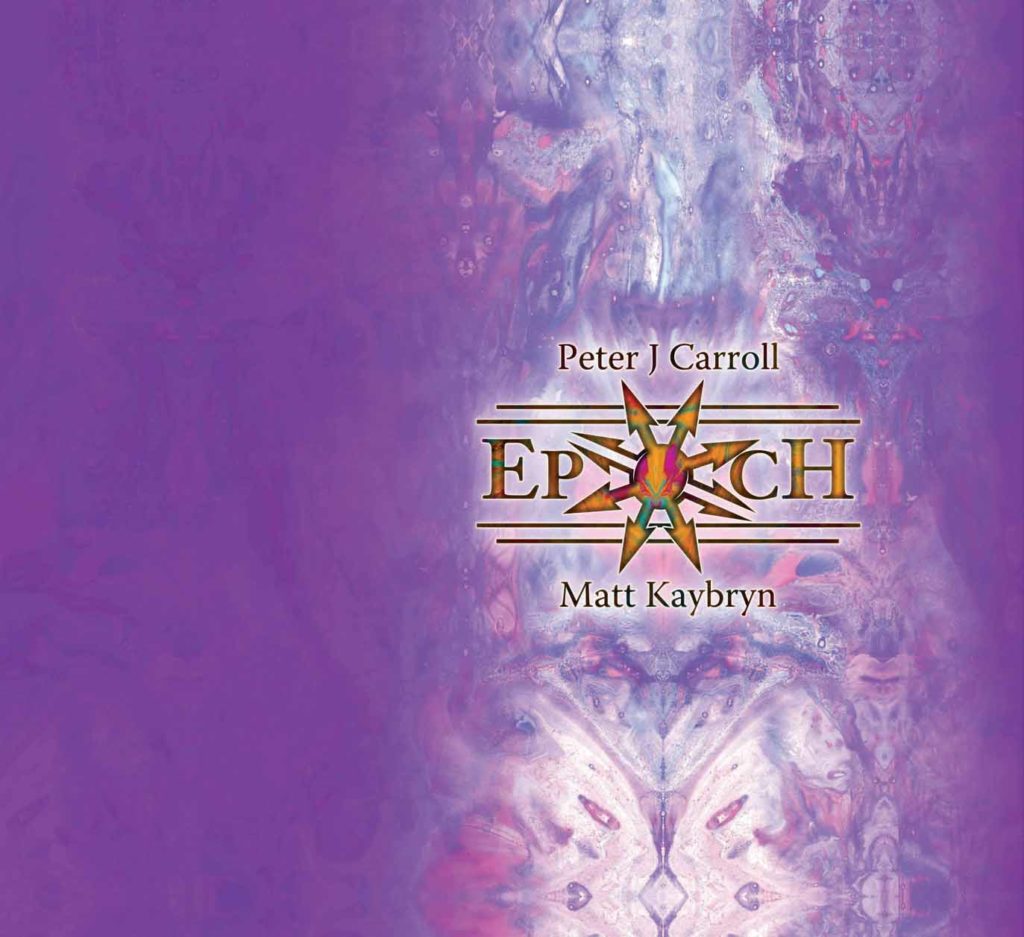
The Esotericon & Portals of Chaos
By Peter Carroll and Matt Kaybryn
The Epoch – Hardbound Folio Book & Altar Icon Card Deck.
The Book: This fully illustrated and illuminated hardback opens with a detailed historical resume of magical and esoteric thought (where it came from and where it may go) before presenting the reader with three complete grimoires.
The Deck: A Cartomagical tool for the 21st century, the Deck presents 54 glorious Altar Icons spanning the three Spheres of Elements, Bi-Planets and Stellar god-forms. Hardcover: 216 pages, 28cmx23cm
Publisher: Arcanorium College (21 Mar 2014)
ISBN-10: 0992848822
ISBN-13: 978-0992848828
UK Price – Elsewhere, use same buttons, see below for guide to worldwide postage.
Book £40.00+p&p Click HERE
Deck £15.00 (VAT inc)+p&p Click HERE
Both for £50.00+p&p Click HERE
Postage outside UK is expensive as this is a premium book, could be an additional 50% of order total, eg it costs about £40 to send both items, we will contact you with the actual cost, and refund if preferred. Why not start with the book and come back for the cards if you find you need them, it works out same postage wise
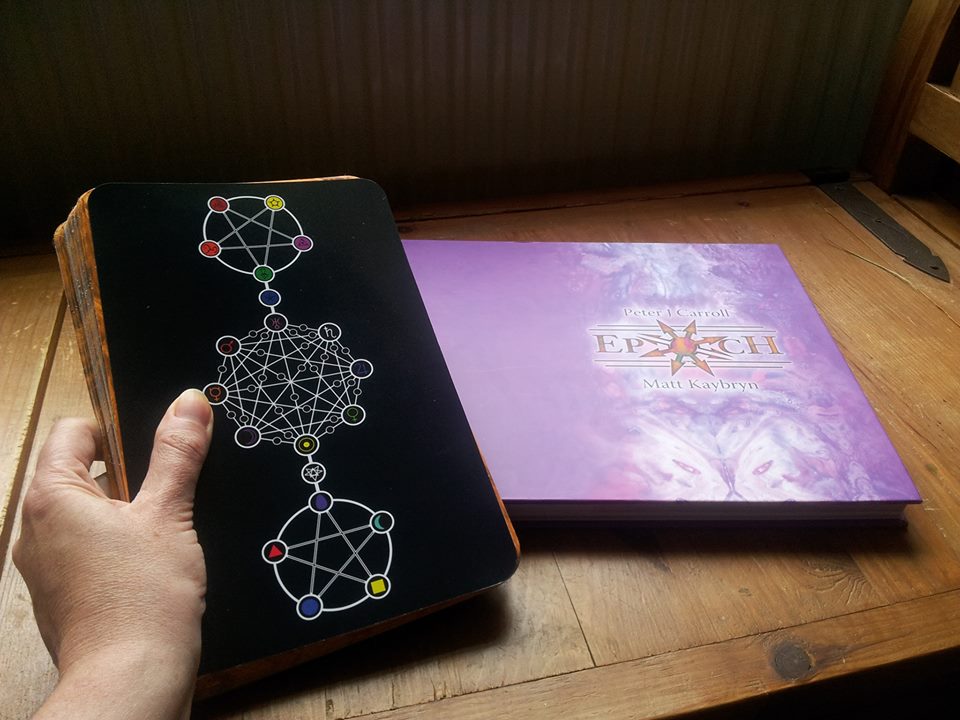
” This really is a pantheon for the present day: up-to-date technowizard
artwork, a commentary which soars over millennia of tradition, picking out
what is useful and relevant at the present, and icons which sum up what
deities from the whole span of Western and not-so-Western culture have
cumulatively come to mean. This is a book to which goddesses and gods,
historically so sensitive about their images, should be happy to belong.”
Professor Ronald Hutton – Fellow of the British Academy
” Not content to release a new grimoire, the Chancellor of Arcanorium College has produced three. Oh, also, one of them is a Necronomicon.
Elemental, Planetary, and Lovecraftian grimoires are joined by an accompanying tome of digitally and painstakingly rendered icons. The Portals of Chaos, and its Chaobala systemisation, marks a particularly cohesive collection of Carroll’s work. But it also contains much exciting new material. Exploration of bi-planetary sorcery – a central component of Renaissance magic somewhat absent in modern occult discourse – is a particularly important feature.
Epoch is a useful resource both for those just starting out and for experienced magicians. There is something here to excite and challenge
occultists of many different dispositions and practices. ” Alexander Cummins – Author of ‘The Starry Rubric’
“The enormous scope of the theory expounded within, coupled with the extraordinary pictures (which are better than anything of this ilk since Freida got down with her paintbrushes), provoke many thoughts as well as providing a neat summary of some complex ideas. Simultaneously a history and a prediction, it casts a spell covering spacetime and beyond, allowing your magick to have results.” Nikki Wyrd -Author of ‘The Book of Baphomet’
Pulled together, it is a fantastic cohesion of ideas in need of cohering, doubly so because the cohesion makes no claims to antiquity and doesn’t have to fit with either Neoplatonic emanations or Sanskrit body centres. Getting your head around the Chaobala is getting your head around a substantially updated magical cosmology. If that kind of thing is your jam, this kind of book is your toast. Gordon White – Runesoup
Without a doubt, the Epoch will have a great influence on the chaos magick paradigm and modern magick in general for years to come. I think every magician, even if they have their own correspondences, should examine the Chaobola system for its elegance and breadth. James Wilber – Scroll of Thoth
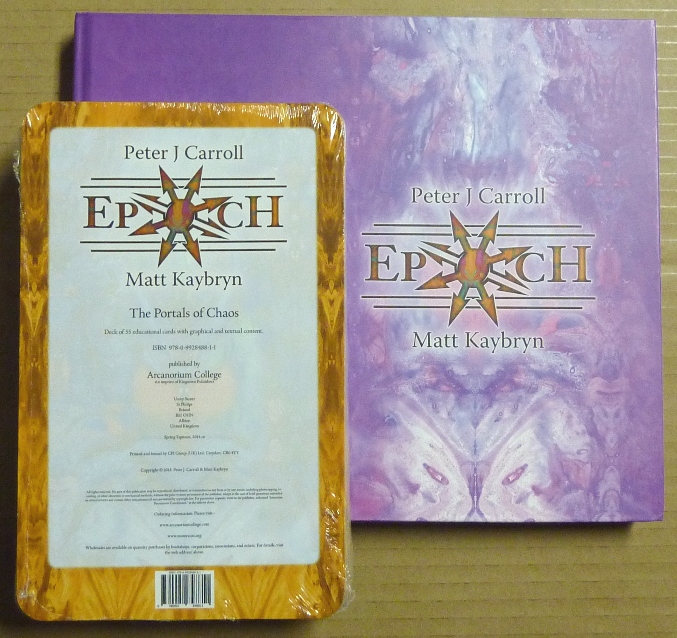
Peter Carroll
The Octavo
A Sorcerer-Scientist’s Grimoire
Peter J. Carroll

The Octavo
A Sorcerer-Scientist’s Grimoire
Peter J. Carroll
Format: Softcover
ISBN: 9781906958176
£15.00 / US$24.00
Subjects: Chaos Magick
Click HERE for The Octavo / USA
Click HERE for The Octavo / UK
Click here for Kindle UK Edition
Click here for Kindle USA Edition
Every universe potentially has its own Supreme Grimoire containing the spells which define its reality and the magic which you can perform within that reality. In this Octavo we have assembled scattered secrets for a Supreme Grimoire for Roundworld, the universe in which you’re standing.
To this end we have taken some inspiration from Pratchett’s Discworld, and a lot from Theoretical Physics and Practical Chaos Magic.
The most original, and probably the most important, writer on Magick since Aleister Crowley.”
– Robert Anton Wilson. Author of the Cosmic Trigger trilogy.
Review of The Octavo by Dave Lee
This is the second book Pete Carroll has brought out in the last two years, after a number of years’ silence. In 2008, there was ‘The Apophenion’, which was something of a departure towards an overall philosophical position, which we might call chaoism, as distinct from chaos magic. Now he presents us with a new synthesis that aims at a much closer marriage of scientific theory and magic than he, or, to my knowledge, anyone else, has attempted.
The first thing you’ll notice about this book (other than the excellent illustrations) is the subtitle. The reference will be lost on non-Pratchett experts like me; I’ve enjoyed a few of Pratchett’s books and found others a bit twee for my taste. (I have to admit, though, that he shows superb understanding of the thermodynamics of godhood in ‘Small Gods’, and a brilliant vision of the Other in ‘Lords and Ladies.’) Apparently, there’s an Octavo of Discworld spells, and it seems this volume is using the conceit that it’s the Roundworld equivalent in order to show how physics and magic can be combined in two very different universes.
The second thing you’ll notice is the physics. Publishers say that every equation in a book halves the readership, and there are a lot of them in The Octavo*. More, in fact, than in Liber Kaos, but they – at least the ones in the first few chapters – are of a very different kind.
The ‘Equations of Magic’ in Liber Kaos have always been problematic: they dealt in quantities which are not measurable, and probably never will be, like ‘degree of gnosis’ and ‘magical link’. So, they are not really equations, but things that look like equations; what they amount to, at best, is a mental checklist, a summary of what we know about magic so far. With a shorthand like that, all that matters is that it’s easily memorable, and the physico-mathematical symbolism does not help at all.
The equations in Octavo are very different. They are much more ambitious, genuinely cosmogonic in nature, and I suspect they have some very important things to say – to those who understand them rather more deeply than I do. I did get lost for much of chapters 2 and 3 (I only have maths to just short of A-level), but surfaced again at the start of Ch 4, where he compares Discworld and Roundworld physics, and comes out with some pretty profound stuff.
One of the things that’s particularly interesting about Carroll’s science is the way he attributes real physical – or aetheric / shadow-physical – reality to quantities that appear in the fundamental equations of physics. In Liber Kaos for instance the wavefunction in the Schroedinger equation is a measure of a real quantity in shadow-time, rather than a mere mathematical convenience, to be discarded as soon as possible in the course of calculations. No, Carroll finds a home for these misty, despised quantities, integrating them into a description of a magical universe. In The Octavo, he comments about quantum superposition, which is a concept we’re normally just supposed to get our heads round, that it actually has fine detail which makes it much more physically real – the alternative forms of the particle are kind of parked in sideways-time. For me, that is a distinct improvement on the usual way superposition is described.
This realistic use of mathematical entities recalls Galen Strawson’s ‘real materialism’**, as does this (p97):
‘A visualized or imagined event can have a similar effect on the imaginary time plane as the probability function of a material event, because it too constitutes a wave-particle event’.
In other words, ‘thoughts are as real as rocks’, to the real, Strawsonian materialist. Carroll also gives a physico-mathematical reality to Sheldrake’s morphogenetic fields – they are the information contained in the virtual radiations emitted by everything all the time.
I do like the depiction of particles as closed universes (p23), and it’s satisfying to read Theories of Everything, but the problem for the mathematically sub-literate becomes: how can I distinguish the true ones? I’m not sure that Carroll’s doing away with the Big Bang (a dirty job, but someone had to do it) yields a truly more complete ToE than the current one: a steady state model of the universe comes no closer to explaining where everything comes from than the expanding-from-a-point one does, it simply makes it an unaskable question, which is not the same thing. His cosmological explanation of the red shift (the core mystery of cosmology) involves something like a new mechanism for Zwicky’s previously-rejected ‘tired light’ hypothesis, and I have asked a mathematical friend of mine how viable an explanation it is.
Some of my reservations about this book stem from Carroll’s over-willingness to form Laws. Right near the beginning of the book, he has concreted the ‘multiple selves’ model into one. The idea of selfhood as multiple arose out of a very postmodern milieu of thought about what we are, and has proved very useful to magicians. However, it does suffer from a vagueness at its core: it would be a good idea to clarify the difference between personalities and the moment-to-moment sense of selfhood. The former may be usefully thought of as multiple, but the sense of self is always and ever phenomenologically singular. I challenge anyone to describe how it can be sensed otherwise.
This excessive taste for laws surfaces again on p66, where Carroll attempts to prove that there is always ‘ an even number of selves’, with an argument I found so unconvincing I suspect the author is self-consciously preaching to the choir, knowing we’ll indulge him.
My main criticism of the book is that the ‘Equations of Magic’ reappear in Ch6. I’ve said above why they are not equations, but simply tally-sticks; they remind me of Frazer’s useless laws of magic, but with added algebra to put more people off. Has a magician ever told you they’ve helped him or her plan a working?
Their inclusion wouldn’t be such a bad thing if it wasn’t for the very high quality of arguments pursued using real equations in the cosmological parts of the book: to someone who hasn’t been following the maths very closely but can see how the EoMs cannot be real equations, they simply serve to cheapen the value of the other equations and arouse suspicion about their validity. And to use them to derive, via a complicated chain of reasoning, the conclusion that group magic is no more powerful than individual magic is pure tautology, because the only way anyone could get that conclusion would be by building it into the ‘Equation’ in question.
By the way, can we have a straw poll on this? My feeling is that group magic is immensely more effective for some kinds of enchantment.
The final complaint I have is a purely aesthetic one. Sure, it wouldn’t be a bad idea to replace the phrase ‘material base’ with something else, because we do talk about servitors quite a lot. But the term ‘groundsleve’, to my ear, is down in the flooded and odious basement of English, along with ‘staycation’ and ‘bromance’. (OK, I suppose that means I’ll have to come up with one myself.)
Back to a few final words of praise: One of the satisfying things about this book is the way Carroll fills out and brings up to date old ideas, some of which he has developed and used years before. Like the way the good old GPR gets completed into the GCR, a much more symbolically satisfying and complete thing.
Proper weight is given to the Apocalypse, and what wizards can do to help avert the collapse our stupidity has got us into.
I have to make a special mention of the llustrations. If there was an award for ‘best occult book graphics of the year’, then Matt Kaybrin’s would sweep it, with these bold, dark, unusual mixtures of traditional and cyber-art.
In the end, I would definitely recommend this book. It is important, maybe very important, and will stir some interesting thoughts even in the non-mathematically-inclined. Carroll’s basic attitude to mysteries is the only healthy one: not to try and banish them, like the Dawkinsian parascience bunch, or use them to obfuscate, like the religious do. He writes: ‘Mysteries should present challenges, not opportunities for dumb belief.’
*I showed the book to a mentally tough shaman I know, and as soon as he saw the equations, he declared he’d rather chew his leg off than try to understand them.
‘The Octavo is remarkable in the finest sense of the word: a great and indeed unique achievement, making a genuine physics of magic’.
– Professor Ronald Hutton
Peter J. Carroll
Peter J. Carroll is one of the founders of The Magical Pact of The Illuminates of Thanateros (IOT) which he led for a decade. He has spent thirty-seven years in research and experiment and is the author of four other books; Liber Null & Psychonaut, Liber Kaos: The Psychonomicon, Psybermagic, and The Apophenion.
Peter J. Carroll Specularium website www.specularium.org

The Apophenion
A Chaos Magic Paradigm
Peter J. Carroll
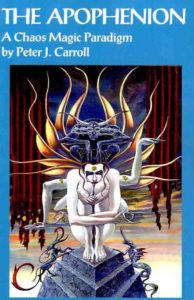
The Apophenion
A Chaos Magic Paradigm
Peter J. Carroll
ISBN: 978-1869928650
Format: Softcover
£15.00 / US$24
Subjects: Chaos Magic
Click HERE for The Apophenion / USA
Click HERE The Apophenion / UK
Click here for Kindle UK Edition
Click here for Kindle USA Edition
From the Author
“My final Magnum Opus if its ideas remain unfalsified within my lifetime, otherwise its back to the drawing board.
Yet I’ve tried to keep it as short and simple as possible, it consists of eight fairly brief and terse chapters and five appendices. It attacks most of the great questions of being, free will, consciousness, meaning, the nature of mind, and humanity’s place in the cosmos, from a magical perspective.
Some of the conclusions seem to challenge many of the deeply held assumptions that our culture has taught us, so brace yourself for the paradigm crash and look for the jewels revealed in the wreckage.This book contains something to offend everyone; enough science to upset the magicians, enough magic to upset the scientists, and enough blasphemy to upset most trancendentalists.”
The Apophenion cover artwork by David Gough www.davidgoughart.com
”Apophenia is the experience of seeing meaningful patterns or connections in random or meaningless data. The term was coined in 1958 by Klaus Conrad,[1] who defined it as the “unmotivated seeing of connections” accompanied by a “specific experience of an abnormal meaningfulness”. Source Wikipedia
Praise for Peter J. Carroll’s works
“The most original, and probably the most important, writer on Magick since Aleister Crowley.” Robert Anton Wilson, author of the Cosmic Trigger trilogy.
“Magicians feared they had lost Him to the world of Theoretical Physics, but Zarathustra has come down from the mountain. The Apophenion is spoken – and proves the wait was worth it. Religion starts the hunt for Meaning, and with science Meaning is killed and served up as Truth. So we need magic, sowing the seeds of Meaning in everyday events, and we need art to cultivate them to public awareness. Thus does Apopheniareveal how to bring back meaning to our diminished lives.” Lionel Snell, Aka Ramsey Dukes, author of SSOTBME.
REVIEWS
THE APOPHENION
by Peter J. Carroll
‘Framed as the outpouring of insight generated by the novel Goddess ‘Apophenia’, Pete Carroll’s new work is a real gem. Coming from a science background, this is his attempt to create a falisfiable model of why the universe looks the way it does, and just why magick can operate successfully.
In the inimitable Carrollian style we have come to know and love, our author sets out to demolish the edifices of being, consciousness, causality, the big-bang and more. In toppling these ontological Titans Pete discovers a universe of panpsychism and intense meaning.
If nothing else this agrees with my own views and is therefore a Good Thing. Pursuing this process through the scientific style of exploration means that quantum physics, special relativity et al show up pretty frequently in the text. If you buy this book expecting lists of planetary correspondence and ritual-by-numbers instructions you’re going to be disappointed.
However this doesn’t mean that this is all physics and no esoterica. Rather the point is that the reading of the universe that the author presents is suffused with magick. (Nevertheless there are some reassuring illustrations of occult entities and one explicit ritual – a rather lovely evocation of the Goddess Apophenia herself).
My reaction in reading this book was one of excitement. The suggestions that Pete advances tickle the mind delightfully. Certainly this isn’t Liber Null. It’s not a manual of techniques but instead concentrates on theory, yet that doesn’t make for a dull read. The theorisation presented here can light the touch paper of a hundred disciplines: cosmology and magick for sure but also Fortean studies, ethnography and especially neuro-biology.
Algebra explodes across the appendices of the book scattering the non-mathematicians towards the Epilogue where things are nicely rounded off in laypersons terms. The truth may well be that we live in vorticitating hypersphere with three dimensional time that, as the author beautifully asserts, “…invites us to become apprentice gods.” The very fact that I can now say ‘vorticitating hypersphere’ and know what that means is a testament to the authors explicatory powers.
The final and perhaps most wonderful thing about The Apophenion is how it demonstrates the development and maturation of Pete Carroll’s earlier writing. If nothing else this stands as a testament to the work of an individual (or perhaps conspiracy of selves!) who’s magick really does seem to work.
Eight chaospheres out of a possible eight!’
– Julian Vayne
